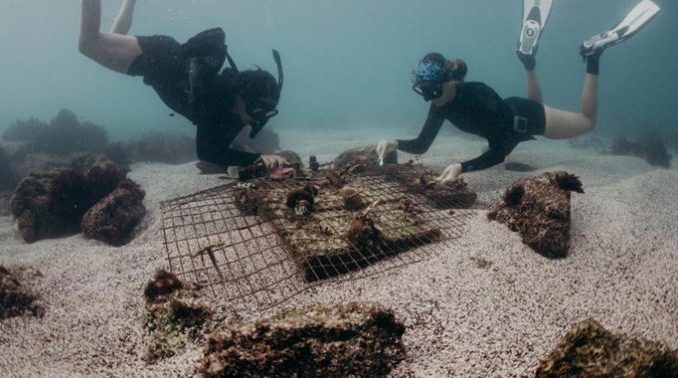
Coral reefs almost entirely disappeared from the Galapagos Islands, due to changes in water temperature caused by the El Niño phenomenon in 1981 and 1997, destroying 97%.
Around the marine reserve there were 17 reefs under construction or structural, but after the El Niño event 16 of these reefs disappeared due to the pressure generated on the species.
“Most of the corals turned into white sand,” explained Jennifer Suárez, a marine researcher at the Galapagos National Park (PNG).
The only place in the archipelago where a reef still exists, almost intact, is in Darwin, the first island of the Galapagos to the north. Not all is lost, according to the researcher, who assures that in Wolf they found a coral community that is in the process of recovery.
In the last five years of monitoring, corals have been found that have adapted to the ecosystem. Due to these findings, the Galapagos National Park Directorate implemented a pilot plan for the restoration of these marine ecosystems. Suárez highlighted.
Three Axes has the PNG project to restore coral reefs, which according to the researchers’ estimate will take about two years.
The expert pointed out that the first step is to survey the current state of the corals around the archipelago. “We want to know which species are stronger in the face of climate change and to know where, in the long term, restoration measures can be implemented,” she said.
Create a nursery for the growth of the different species; that is to say, a kind of nursery for corals, it is the second, which is already being carried out in Santa Cruz.
The third is “with the species from the nursery to be able to repopulate or restore Punta Estrada (Santa Cruz), which is where we find more traces of coral,” she pointed out to the expert.
She acknowledges that the process is complicated, but also that coral is a species of great benefit to other marine animals. “Technically, the reefs serve as protection zones and carbon dioxide fixers,” the researcher warned.
This year, as part of the pilot, the technicians with the support of volunteers from the GNPD have implemented different planting methods in Academia Bay and on Santa Cruz Island, which allows easy access to the nursery where the corals are kept for monitoring. , monitoring and cleaning; actions necessary for their survival.
The objective is to provide assistance to the corals until they reach the appropriate size to be transplanted to the final place, indicates the information from the PNG.

Be the first to comment